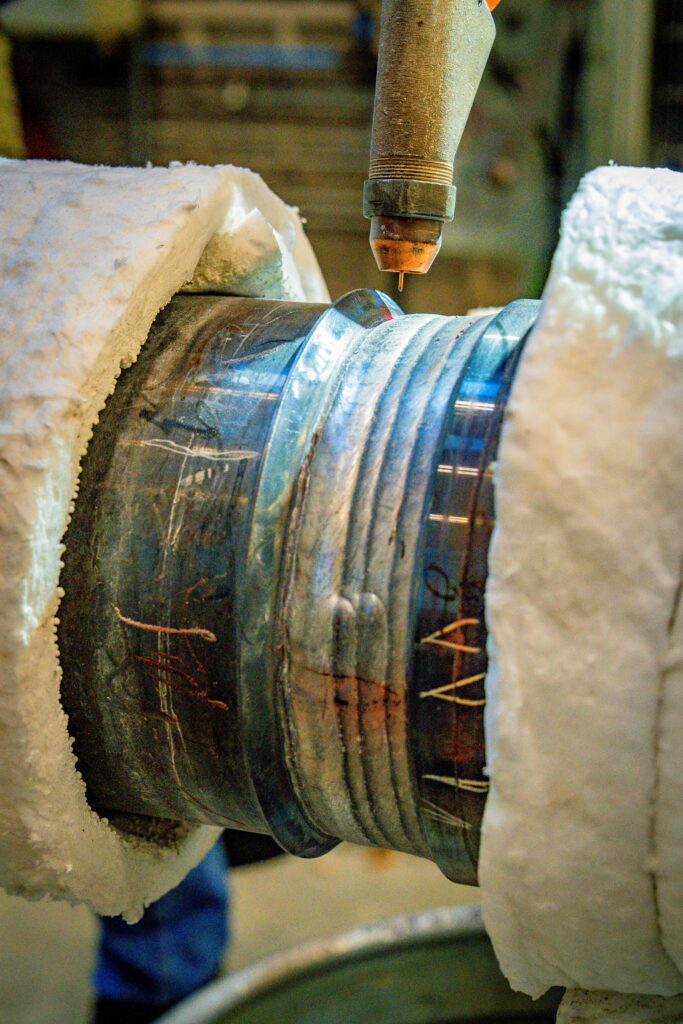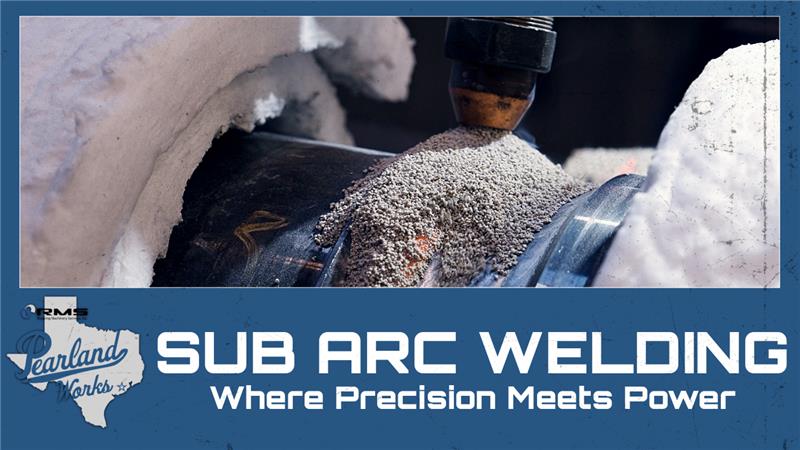At Rotating Machinery Services (RMS), we believe repairs should deliver more than just a quick fix. For heavy rotating equipment—like turbine shafts, pump cases, and compressor components—repairs must deliver durability, precision, and long-term performance. That’s where Submerged Arc Welding (SAW) comes in.
As you’ll see in our latest video, Subarc Welding isn’t just another welding method — it’s a high-performance process designed for the demands of large, high-value components. The video showcases how our technicians and engineers apply this method in real time, and this write-up gives you a closer look at why it matters.
Why Subarc Welding Works
Submerged Arc Welding is known for its ability to lay down large volumes of metal with speed and consistency. It uses a continuously fed wire electrode beneath a granular flux that melts to shield the weld pool from the atmosphere. This flux barrier prevents contamination, enhances weld quality, and helps produce smooth, consistent results — ideal for repairing or rebuilding industrial parts.
What sets SAW apart is its productivity. The process can deposit over 20 pounds of weld metal per hour, significantly reducing repair time compared to conventional methods. Fewer passes mean lower heat input, which reduces distortion — a critical advantage when repairing precision-machined surfaces or large-diameter components. The footage in the video highlights these benefits in action, from smooth bead formation to high deposition rates across a rotating shaft.
Tailored for Demanding Repairs
SAW is also highly adaptable. At RMS, we modify flux chemistries to match specific materials — for example, using chrome-modified flux to preserve alloy content in stainless steel repairs. The process excels in both buildup and cladding applications. Whether restoring the surface of a shaft journal or applying a corrosion-resistant layer to a component, SAW delivers uniform, reliable results that stand up to harsh operating conditions.
Because SAW is gravity-fed, welding must occur horizontally. Our facilities are equipped with custom rotary tables and fixtures that ensure the workpiece is precisely aligned throughout the process. You’ll see this in the video as components rotate smoothly under the welding head — a critical factor for dimensional accuracy and repeatable outcomes.

Proven Results, Trusted Process
One recent example shown in the video involved rebuilding a worn turbine shaft. Using SAW, our team was able to restore critical dimensions quickly and accurately, reducing total downtime and eliminating the need for a costly replacement. It’s this kind of high-performance repair that SAW makes possible — and that RMS delivers every day.
When uptime, precision, and reliability matter, Subarc Welding provides the foundation for superior industrial repairs. Combined with RMS’s vertically integrated capabilities and experienced team, it’s part of why customers trust us with their most critical assets.
If the video gave you a visual sense of what we do, this write-up gives you the technical and operational reasons why it works. Together, they tell the story of how RMS continues to raise the bar in turbomachinery repair.
To learn more or to speak with our team about how Subarc Welding can support your operations, visit rotatingmachinery.com or contact us directly.

